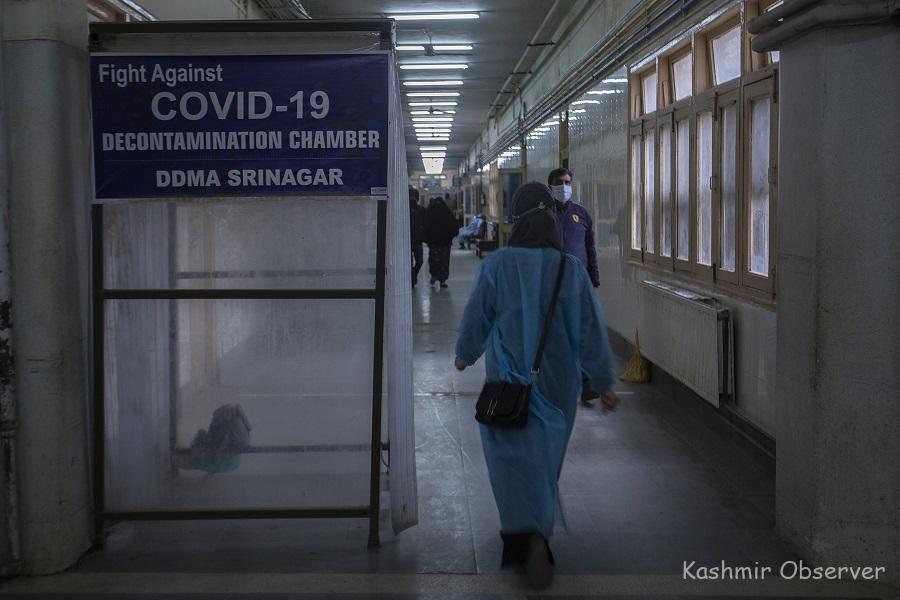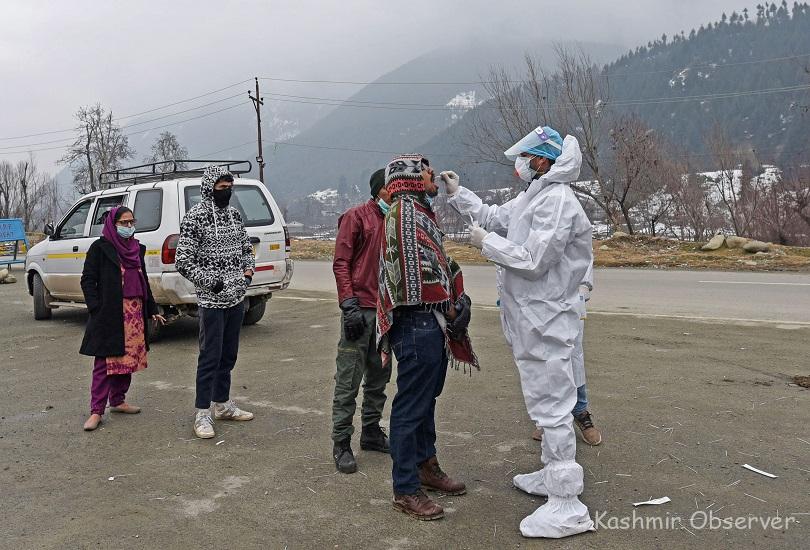
Srinagar- In a positive sign, the hospitals in Kashmir are witnessing less admissions of Coronavirus infected patients even as the third wave of the pandemic continues to tighten its grip over the Union Territory.
A health official said that even though there is a sharp spike of COVID-19 cases, the admissions of the same are minimal.
Professor and HoD Community Medicine, SPM, GMC Srinagar, Dr S. Muhammad Salim Khan told Kashmir Observer that the hospital admissions is not in consistent with the rising number of positive cases.
“There is a slow rise in admission. If a person comes positive, it doesn’t mean he will get admitted. It depends on the severity,” Khan said, adding that “but that doesn’t mean we will lower our guard. We need to be alert,”
He further said since the first three weeks of the Omicron variant, we haven’t seen much rise in admissions but it needs to be seen how it behaves in coming weeks.
The doctor maintains that the Omicron affects the upper respiratory tract thus mild severity. “But it’s not only Omicron, we have other parents like Delta—which create havoc during the second wave,” he said adding that “people need to understand that there may be more than one strain circulating presently”
According to Covid Control room data, a copy of which lies with Kashmir Observer, there are 112 beds with oxygen support and 54 are occupied and out of 11, 7 ICU beds are occupied with 49.50 percent of bed occupancy.
In SKIMS, Soura the number of oxygen beds are 74 and 34 are occupied. Out of 30, only 2 ICU beds are occupied with 30.77 percent of bed occupancy.
In territory care SMHS hospital, Srinagar 211 oxygen supported beds are available and only 41 are occupied. At the same time out of 16, only 3 ICU beds are occupied with 19.38 percent of bed occupancy.
At Defence Research and Development Organisation’s (DRDO) hospital in Srinagar 375 beds with oxygen support are available out of which only 88 are occupied with patients. The number of ICU beds are 125 and only 14 are occupied with 20.40 percent of bed occupancy.
At SKIMS Bemina out of 201 oxygen supported beds only 38 are occupied.
Dr. Khawar Khan, Physician specialist argues that the Vaccines had a great role to play in decreasing the mortality and severity of the disease.
“The disease progresses more vigorously in those unvaccinated,” he said.
He however says that the variant is not mild but is milder than previous variants to be precise.
“but unfortunately that is cancelled out by the fact that it is highly infectious. People need to follow SOPs more rigorously therefore,” he added.
Dr Mushtaq Ahmad Rather, Director, Health Services Kashmir told Kashmir Observer that in the second wave the cases were less than in the third wave but hospitalisation was high.
“This is not the case in the third wave but people need to focus on home isolation and check the oxygen level regularly. We can treat then through phone calls as well,”
In a statement, Dr Rather said that they have set up call centres in all the districts which are functioning 24/7. He said people who are Covid positive and are in home isolation can call the helpline numbers in case they have severe symptoms and would be hospitalised.
The director said Covid beds have been kept available in rural areas where people have no option to go for isolation.
Dr Mushtaq also said that apart from dedicated 500 bedded DRDO Covid-19 hospital, beds have also been kept available at tertiary care hospitals, district and sub-district level.
The director said that all the facilities have been kept ready in view of a new surge in cases and the same is being reviewed on a daily basis.
Follow this link to join our WhatsApp group: Join Now
Be Part of Quality Journalism |
Quality journalism takes a lot of time, money and hard work to produce and despite all the hardships we still do it. Our reporters and editors are working overtime in Kashmir and beyond to cover what you care about, break big stories, and expose injustices that can change lives. Today more people are reading Kashmir Observer than ever, but only a handful are paying while advertising revenues are falling fast. |
| ACT NOW |
| MONTHLY | Rs 100 | |
| YEARLY | Rs 1000 | |
| LIFETIME | Rs 10000 | |













